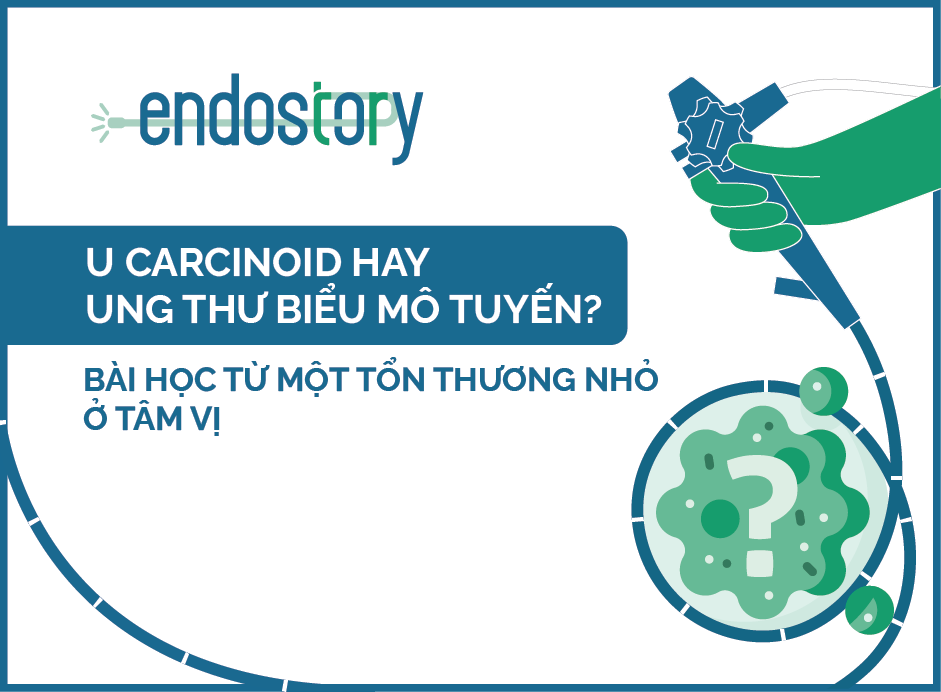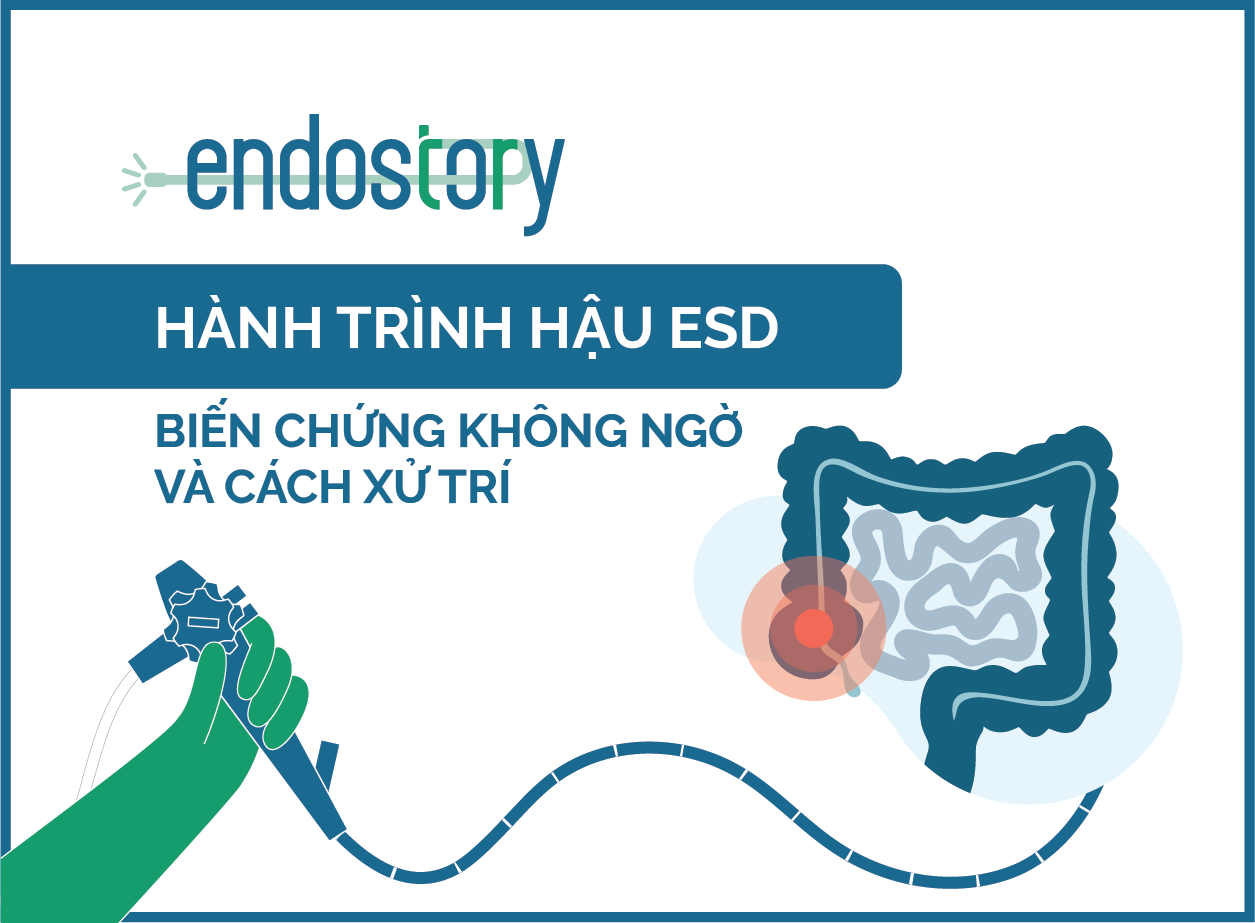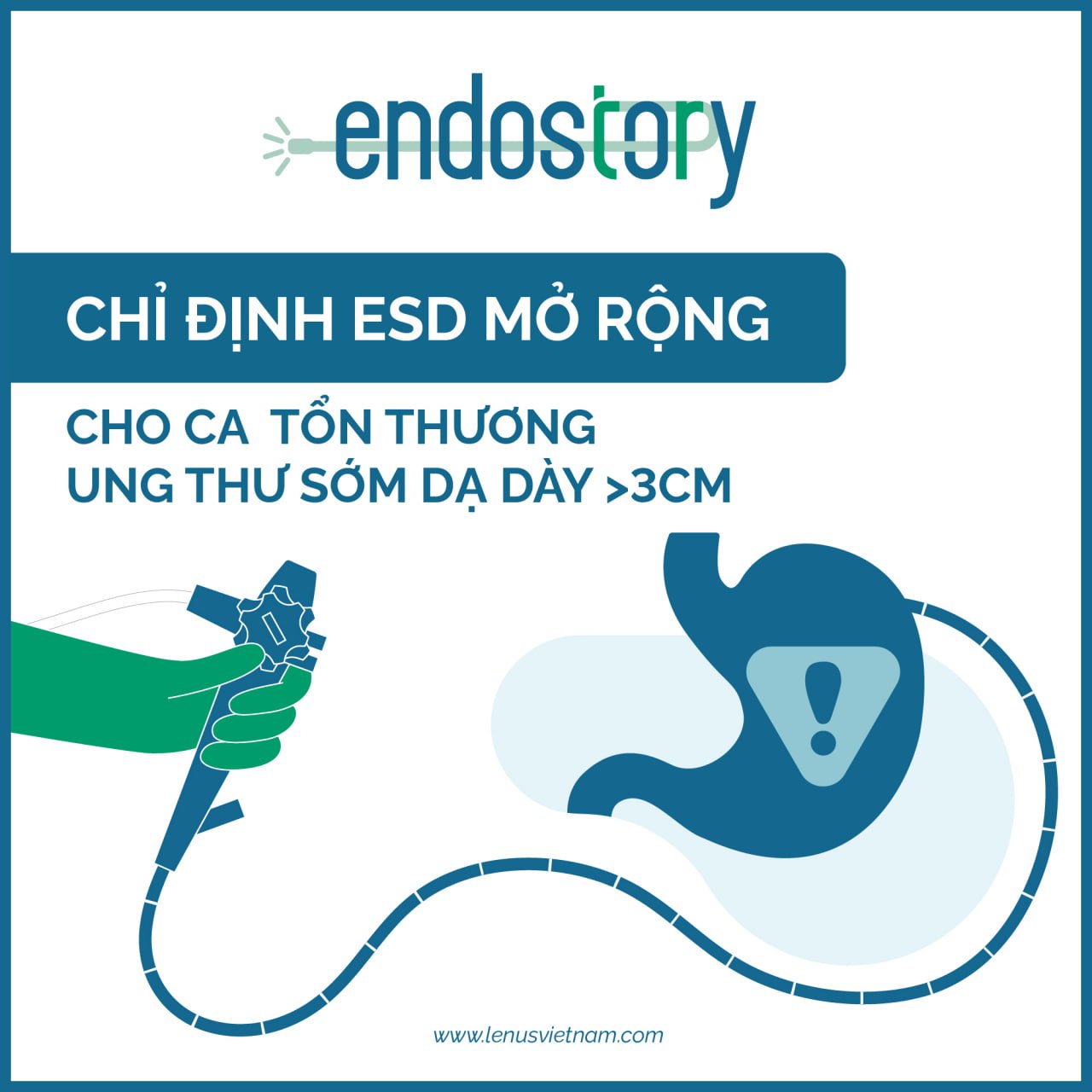Endostory No.18: Strategy for Using DualKnife and ITknife2 in ESD Procedures
In ESD procedures, strategy plays an equally decisive role as technique. Choosing the right instruments, determining the correct approach, and anticipating potential challenges help ensure the procedure is performed safely and effectively.
The case in ENDOSTORY #18 is a clear illustration of this point—a case of early gastric cancer in the upper stomach, raising an interesting question about the strategic use of the DualKnife and ITknife during the procedure.
Clinical information and initial observation
A 52-year-old female patient with no significant medical history presented with epigastric pain. Endoscopy revealed a lesion with ulceration in the upper stomach. Biopsy results showed high-grade dysplasia.
Under white light imaging, the initial observation revealed a slightly depressed lesion, macroscopically classified as Paris type 0-IIc, with good extensibility and no signs of submucosal invasion.
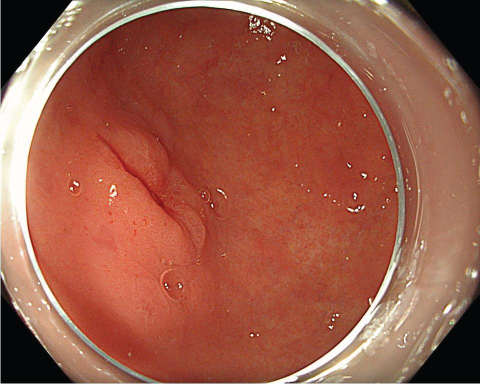
When observed with M-NBI, the lesion had a clearly defined demarcation line (DL). The vascular (V) and surface (S) patterns were irregular, consistent with a diagnosis of malignant lesion.
Based on endoscopic findings, the lesion was diagnosed as well-differentiated adenocarcinoma (WDA), with invasion depth of HGD/T1a (superficial invasion). The selected treatment approach was ESD.

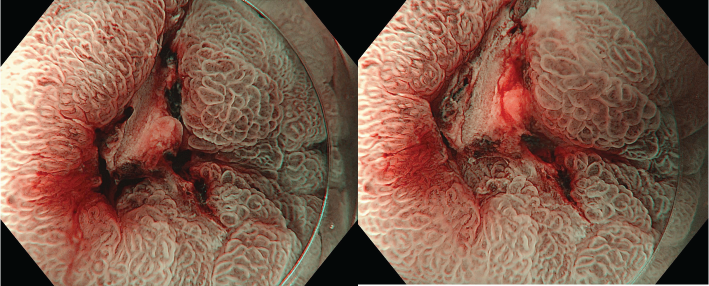
Intervention strategy
For small gastric lesions located in favorable positions with well-stretchable mucosa, the choice of knife and strategy are critical. The intervention team established two possible approaches:
Approach 1: Combination of DualKnife J and ITknife2
- Step 1: Make a small incision on the anal side using the DualKnife.
- Step 2: Use the ITknife2 to cut from both sides of the incision, moving from the anal side toward the oral side, to complete the circumferential incision.
- Step 3: Perform submucosal dissection from the oral side to the anal side using either the DualKnife or ITknife.
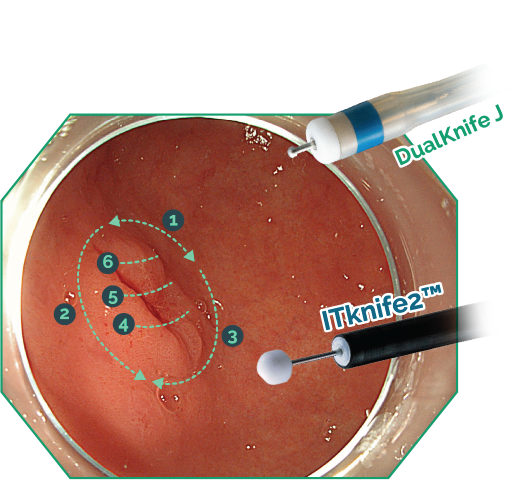
Approach 2: Using DualKnife J only
- Step 1: Since the DualKnife is a push-type knife, make the circumferential incision by pushing the knife along two lateral paths from the oral side toward the anal side.
- Step 2: Perform submucosal dissection from the oral side to the anal side using either the DualKnife or ITknife.
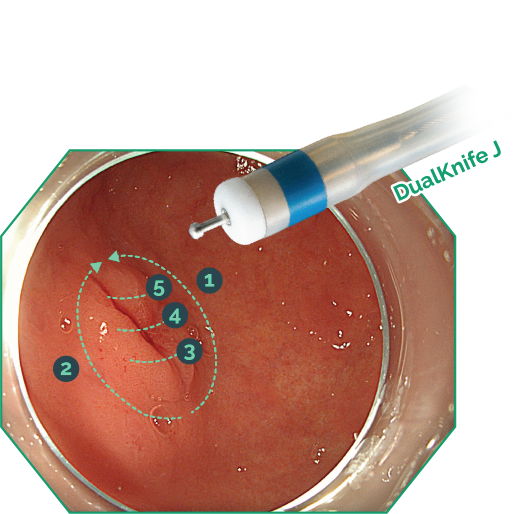
In practice, this case was performed using only the DualKnife J. The procedure proceeded smoothly without any non-lifting signs. The dissection was performed using an Erbe Vio 3 electrosurgical unit in EndoCut effect 2 mode, combined with ForceCoag 65W and SoftCoag 60W for hemostasis. The entire procedure was completed in 15 minutes.
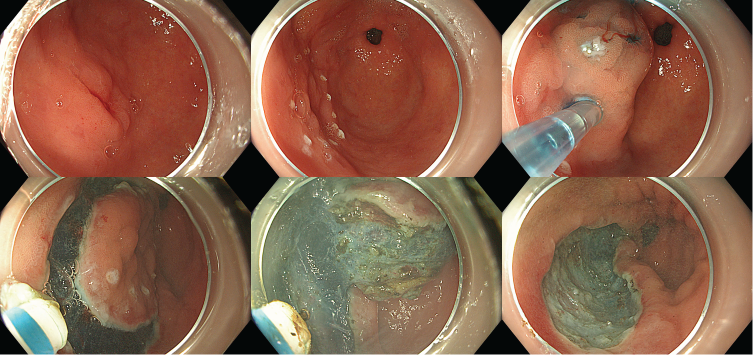
Outcome and follow-up
Post-ESD histopathology showed moderately differentiated adenocarcinoma invading the muscularis mucosa (pT1a, v0, ly0, HM0, VM0). The patient was scheduled for regular follow-up, with no need for additional intervention.
Case conclusion
In ESD procedures, preoperative assessment and planning play a key role in determining procedural success. A clear plan helps physicians anticipate difficulties, determine procedural sequences, estimate time, and proactively prepare backup strategies for unexpected situations. In contrast, inadequate preparation may lead to passive responses, hasty decisions, and technical errors, increasing the risk of complications.
This case once again serves as a reminder: the success of an ESD lies not only in technical skills but begins with the operator’s mindset and preparation.
About the ENDOSTORY series
ENDOSTORY is a clinical endoscopy case-sharing series produced by Lenus Vietnam, aiming to provide useful insights for endoscopists. Each week, one “story” is selected and published on the Lenus Vietnam fanpage at 8:00 PM every Friday.
The series is supervised by Dr. Tran Duc Canh, an expert in the diagnosis and treatment of early-stage cancer. Not only has he directly performed numerous complex ESD cases, but Dr. Canh has also trained many young endoscopists in Vietnam, helping to promote the widespread adoption of this “golden key” technique in early gastrointestinal cancer treatment. His spirit of sharing and spreading knowledge is a major inspiration behind the creation of the ENDOSTORY journey.
For feedback or discussion, please inbox the Lenus Vietnam fanpage or email us at lenus-mkt@lenusvn.com

